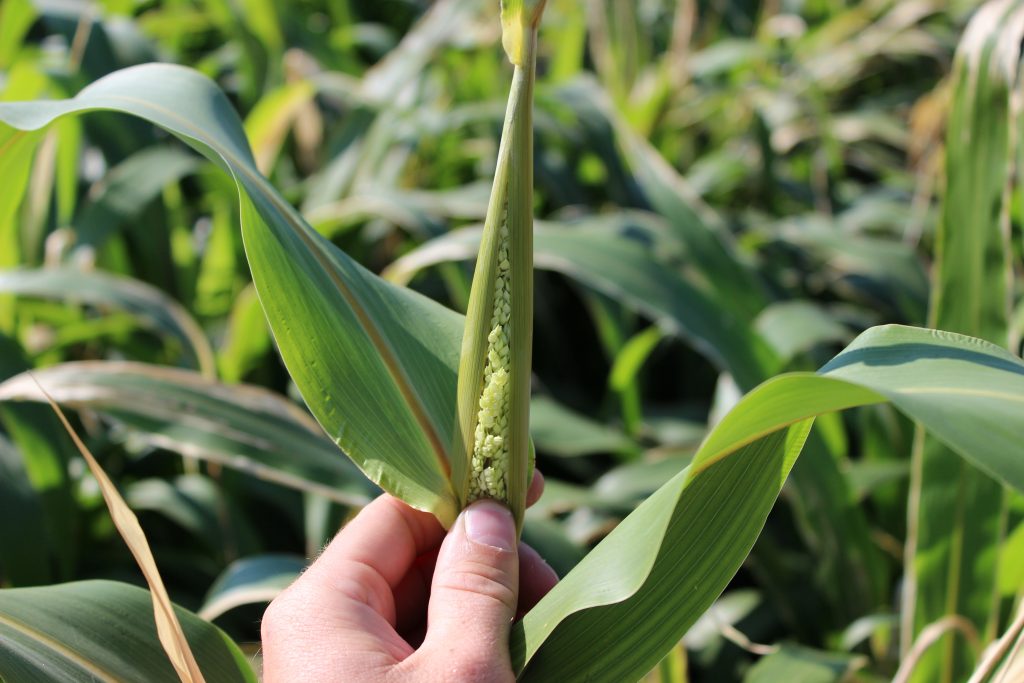
As we get into the thick of summer annual season, we are bombarded with product options. Within the Southeast AgriSeeds/King’s AgriSeeds inventory alone there are dozens of summer annual options and combinations of options to plant. Combine this with products offered by other organizations and the number becomes staggering. Daily I have discussions with producers who have one thing on their minds; increasing the productivity and profitability of their operation. How then, in this jungle of options do we find products that meet these goals? How do we ensure proper product placement and avoid disappointment? The best suggestion I can give is to develop a list of qualifying questions and a relationship with multiple individuals who can advise you on product placement. Along the way, you’ll begin to formulate your own standardized procedure to make educated decisions each planting season. Ideally this process will let you weigh the pros and cons of a variety of options. Review the common questions below and then get started on your own list.
Is my soil fertility balanced? This is the most basic question when growing any forage, and its answer can lead to both current season and long term success. It will also determine which forage you choose. For instance, while slightly acidic soils are not ideal for most annuals, some annuals tolerate lower pHs than others. Hybrid Pearl Millets, for example, perform in soils with pH as low as 5.5 and produce great forage quality. In addition, while crops in the sorghum family may be more sensitive to lower pH, they can perform well with appropriately timed applications of phosphorous and ‘spoon fed’ nitrogen. In general, summer annuals require high amounts of phosphorous in the seedling phase. Adequate applications may help them overcome other deficiencies.
Just know this: finding out and balancing your soil fertility profile it is the most cost-effective pre-planting measure you can take.
Given the equipment I have, what summer annual can I plant? Most all summer annual forages are sensitive to seeding depth. However, knowing their germination comfort zone and having the ability to place the seed in that zone is critical. Larger seeding crops such as sorghum sudan need to be seeded at 1 ½ inches deep or ‘into moisture’. Without a no till drill and possibly some weight to add to it, you won’t be able to get the sorghum into moisture and the likelihood of stand failure will increase. Conversely, crabgrasses and other small seeded crops like a more shallow seeding depth with a firm seed bed. No-tilling crabgrass too deep may result in lower emergence, so preparing the seedbed, broadcasting and culti-packing are the preferred techniques.
Which forage is adapted to my harvest management?
Grazing, baleage, haylage, silage and dry hay are all harvest options that, when carried out correctly, can produce top quality forage. Incorrect product placement, however, can lead to low quality forage. First determine what your management allows and then narrow your forage focus based on that parameter. Find some examples below of categories organized by harvest management type. These are a few examples, but are not all inclusive of the options available.
One Cut Mow/Wilt Harvest- Haylage or Grazing
MasterGraze
MasterGraze BMR tillering corn is a 60 day corn that is harvested or grazed in the time period from just before tasseling to just after tasseling. We have seen it make anywhere from 4 to 6 tons dry matter of high sugar, highly digestible feed.
Multiple Harvests/Grazings- Haylage, Baleage, Dry Hay or Grazing
Sudangrass
With thin stems and dry stalk characteristics, sudangrass is the most versatile of the summer annuals. With a few good drying days, it can be taken as dry hay. Additionally, sudangrasses recover faster after mowing or grazing than many of the sorghum sudan varieties.
- AS9301– BMR Gene 6, Dry stalk
- AS9302– BMR Gene 6, Dry stalk, Dwarf
- HayKing– BMR Gene 12
- VNS Sudangrass
Hybrid Pearl Millet
While hybrid pearl millets typically drag in yield behind crops in the sorghum family, aphid pressure and concerns about prussic acid and nitrates in sorghum/sudangrass crops are popularizing pearl millet. While it’s not as fast drying as the 9301 sudangrass, millet can be taken for dry hay as well as baleage, haylage or grazing.
- Exceed BMR- High yields, great regrowth, lower lignin, dwarf structure.
- Wonderleaf- Leafy upright type.
- Tifleaf 3- High disease resistance, dwarf structure with more leaves and less stem.
Teff
Quickly becoming a popular dry hay crop, teff has extreme drought tolerance and makes a great dry hay product that is high in nutritional value. At least two cuttings are possible with timely planting.
- Moxie Teff- Coated with Yellow Jacket for improved germination and flow through equipment.
Grazing Only
Brassicas
Brassica crops are very heat tolerant. They provide great grazing material and maintain soft, palatable texture rather than becoming lignified in the summer months. These can be mixed with sudangrass or seeded alone. Below are the brassicas we recommend for summer grazing.
- T-Raptor Hybrid– Superior grazing, no bulb
- Barkant Turnip– Leafy, tankard bulb
Additional Questions
“Given my production system, do I need non-GMO or organic products?”
“I can’t graze my summer annual until late in the season, which one is best?”
“I need improvements in soil health, what mixture balances soil health and grazing?”
“I have a broad leaf weed problem in the field I plan to plant summer annuals on. What crops allow me to apply broadleaf herbicides?”
“I have horses, what are my summer annual options?”
The list goes on…
I challenge you to develop your list of questions. Think about your current production system and how you would change it. Think about the nutritional requirements of your animals and what you might do to better serve that. Think about conception rates, weight gain, overall yield per acre, long term environmental impact, soil health. Then, contact your Southeast AgriSeeds dealer or give us a call (or email) and let us help you make the appropriate summer annual selections for 2016! You may find that the daunting list of options is easily trimmed after answering a few questions about how these forages fit into your production system.
Thanks to all who have supported us in our transition to Southeast AgriSeeds, LLC. The season has been a great success so far and we look forward to continually assisting you in optimizing your productivity per acre.
– Joshua Baker, General Manager, Southeast AgriSeeds
Speak to an expert at King’s AgriSeeds now at 1-717-687-6224 or email us at [email protected].
